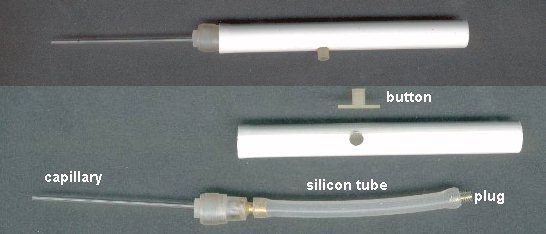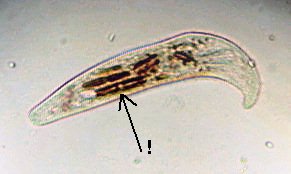 |
I suppose you
have a medical assay laboratory, carrying out blood analysis in your town?
If you do, explain the purpose of your query, and you can probably obtain
"micro hematocrit capillaries".
If possible ask for capillaries that are NOT heparinized. (Heparin is used to avoid blood coagulation and some capillaries are coated inside with this chemical). If they are, rinse the tubes well between uses to avoid killing (?) critters. |
| In labs (especially
in pediatrics), these 1,2 mm inside diameter capillaries are filled with
100 µl of whole blood and centrifuged to accelerate cell sedimentation.
Red and white blood cells separate themselves from the plasma and the length of the red cell portion divided by total capillary length (3") is called hematocrit: usually 40 - 45 % of total length. (If the result is more than 50 %, you have too many red blood cells and you are probably dopey with E.P.O. ! ). |
|
| If the biologist is sympathetic, you can ask them for one or two disposable plastic pipettes which are very useful too! (See picture below). | |







